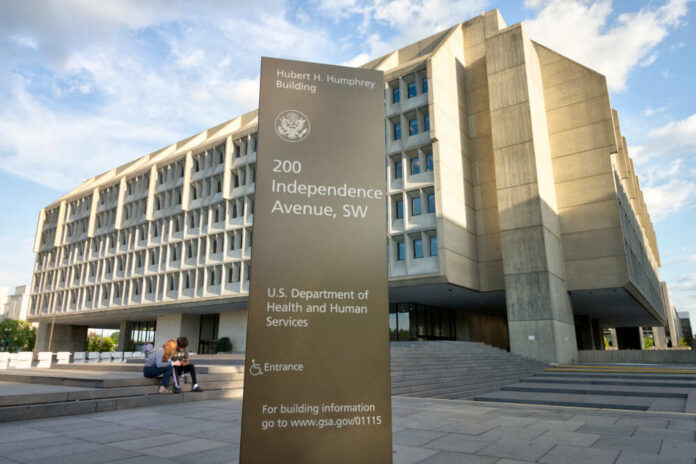
In a move hailed as “Making America Healthy Again,” the Health and Human Services Department is slashing 10,000 jobs while promising to deliver more services for less cost to taxpayers.
At a Glance
- HHS is cutting workforce from 82,000 to 62,000 employees, affecting agencies including the FDA, CDC, NIH, and others
- The restructuring will save taxpayers an estimated $1.8 billion annually
- HHS divisions will be reduced from 28 to 15, with regional offices cut from 10 to 5
- New “Administration for a Healthy America” will be created by merging several existing agencies
- Critics warn of potential negative impacts on public health services and emergency preparedness
Streamlining the Federal Health Bureaucracy
The Department of Health and Human Services has launched a massive restructuring effort targeting what the Trump administration calls bureaucratic bloat. The cuts align with President Trump’s broader workforce optimization initiatives, including his executive order stripping federal workers of collective bargaining rights. Essential services like Medicare and Medicaid are expected to continue without disruption while the department undergoes what amounts to the most significant transformation in its history. The move comes as part of a broader push to create a more efficient, responsive federal government.
GO MAHA!!!
Layoffs begin today at the Department of Health and Human Services as the agency sets out to cut some 20,000 jobs, consolidating 28 divisions to 15 and renaming the agency the Administration for a Healthy America (AHA)
The entire team at the FDA's Office of Media… pic.twitter.com/PcJo1ntBCS— Steve Gruber (@stevegrubershow) April 1, 2025
Secretary Robert F. Kennedy Jr. is leading the charge to drastically reduce the department’s footprint, consolidating operations and eliminating what he characterizes as redundant positions. The restructuring targets jobs in human resources, procurement, finance, and IT, particularly in high-cost regions. The changes are expected to eliminate thousands of positions through layoffs, while another 10,000 jobs will be phased out through early retirement and voluntary separation programs. This represents nearly a quarter of the department’s total workforce.
New Structure, New Mission
The overhaul includes the creation of a new entity called the Administration for a Healthy America (AHA), which will absorb several existing agencies. Additionally, the Centers for Disease Control and Prevention will gain expanded authority by absorbing the Assistant Secretary for Preparedness and Response. The number of HHS divisions will shrink from 28 to 15, and regional offices will be reduced from 10 to 5. A new assistant secretary position focused on enforcement will be established to address fraud and abuse in the healthcare system.
.@StephenM You want to have a conversation about transparency. Let me ask you a question,” Miller stated on CNN. “Do you have any idea where the $22 billion that the Department of Health and Human Services provided to illegal aliens under Joe Biden is right now? Twenty-two… pic.twitter.com/Q7dNtgWxH1
— 🦅 Eagle Wings 🦅 (@CRRJA5) April 1, 2025
“We aren’t just reducing bureaucratic sprawl. We are realigning the organization with its core mission and our new priorities in reversing the chronic disease epidemic. This Department will do more – a lot more – at a lower cost to the taxpayer.” – HHS Secretary Robert F. Kennedy, Jr.
The restructuring focuses heavily on addressing chronic illness and environmental health issues, two priorities that Kennedy has championed throughout his career. Among the most affected agencies are the Food and Drug Administration, which will lose approximately 3,500 positions, the CDC with 2,400 job cuts, the National Institutes of Health with 1,200 positions eliminated, and the Centers for Medicare and Medicaid Services, which will see 300 jobs cut. Many senior employees at NIH were offered transfers to the Indian Health Service.
Controversy and Criticism
Not everyone is celebrating the changes. Former FDA Commissioner Dr. Robert Califf expressed serious concerns about the loss of institutional knowledge. According to reports, long lines of employees were seen at HHS buildings awaiting news of their employment status. Democratic Senator Patty Murray has warned that the cuts could have serious negative impacts on public health and safety, particularly as HHS is simultaneously pulling back over $11 billion in COVID-19-related funding from state and local health departments.
4.1.2025 Washington, D.C.
The Department of Health and Human Services currently controlled by HHS Secretary Robert Kennedy Jr. is expected to fire 1000 employees today. We are all waiting for this to happen. The HHS has been wasting US Taxpayer dollars for years. As a matter… pic.twitter.com/nUigiPeJjd
— Corinne Cliford 🇺🇸 (@corinnecliford) April 1, 2025
At the NIH, several directors and nearly entire communications staffs were terminated as Dr. Jay Bhattacharya began his role as the new director. The Associated Press reported scenes of confusion as employees learned their fates. Kennedy, however, has remained steadfast in his vision, characterizing HHS as a wasteful and inefficient bureaucracy that must be reformed. He insists that the reorganized department will deliver better results for the American public despite having fewer resources and personnel.
“Over time, bureaucracies like HHS become wasteful and inefficient even when most of their staff are dedicated and competent civil servants. This overhaul will be a win-win for taxpayers and for those that HHS serves. That’s the entire American public, because our goal is to Make America Healthy Again.” – HHS Secretary Robert F. Kennedy, Jr.

















